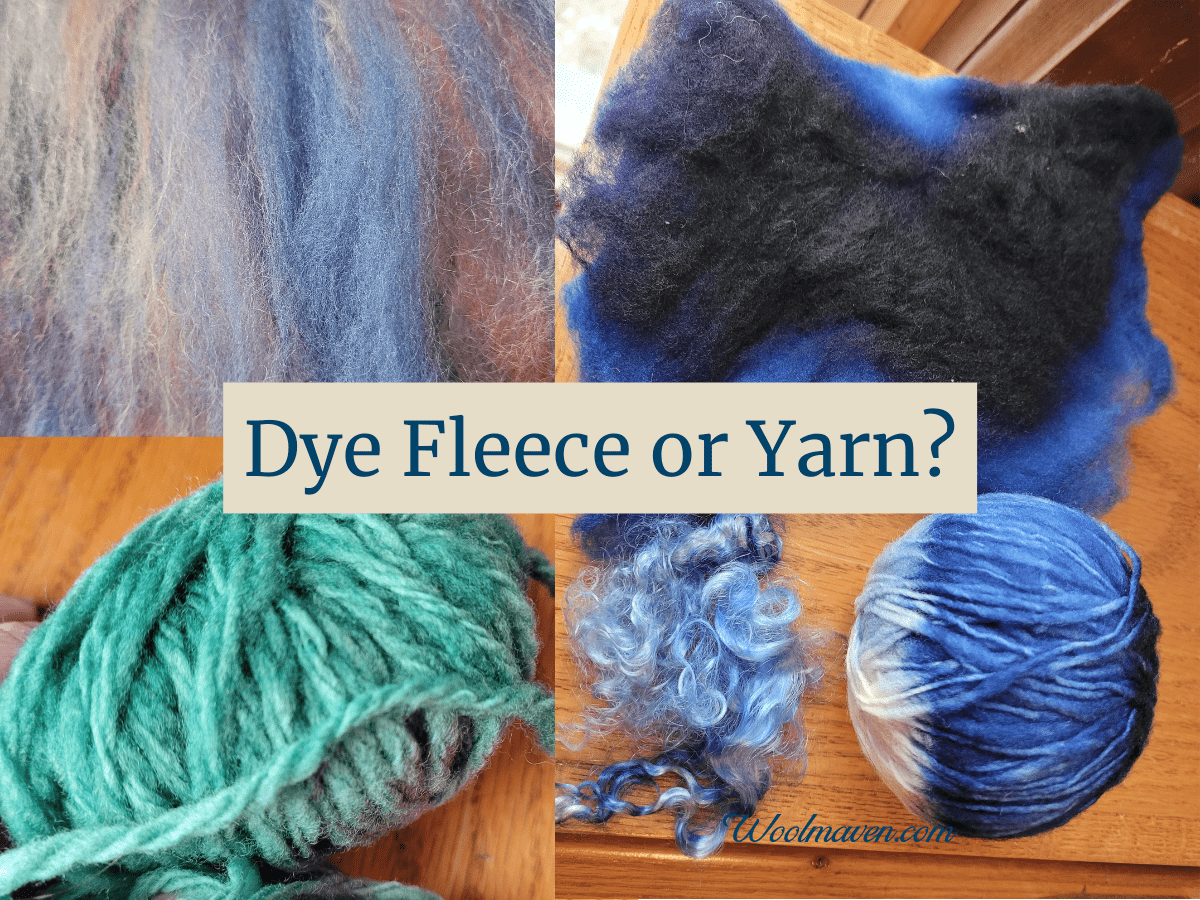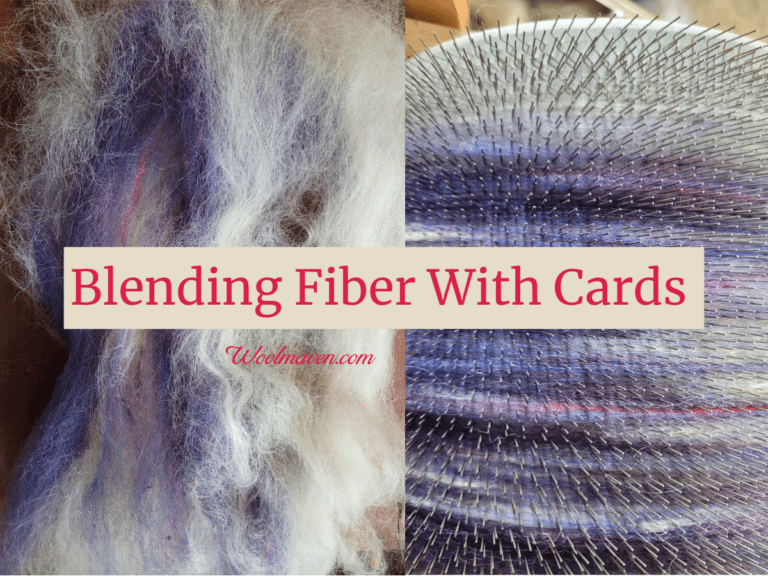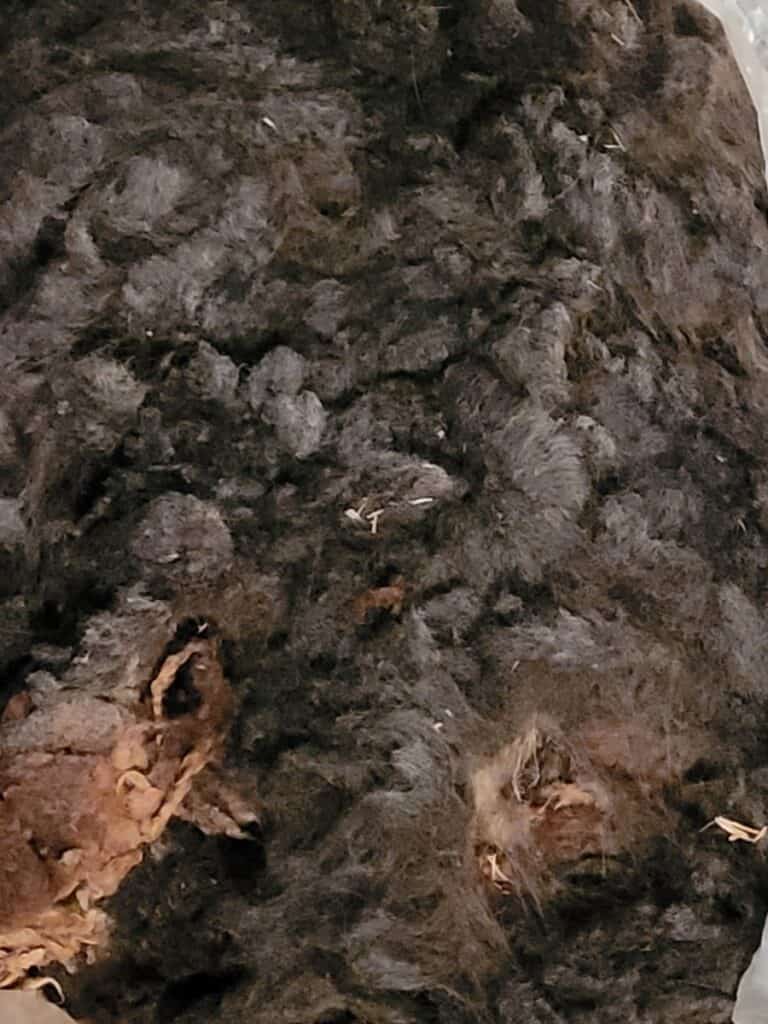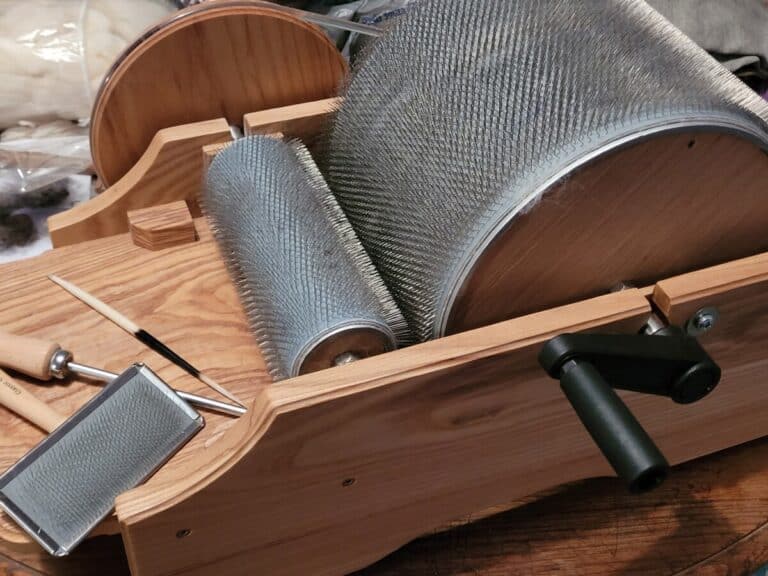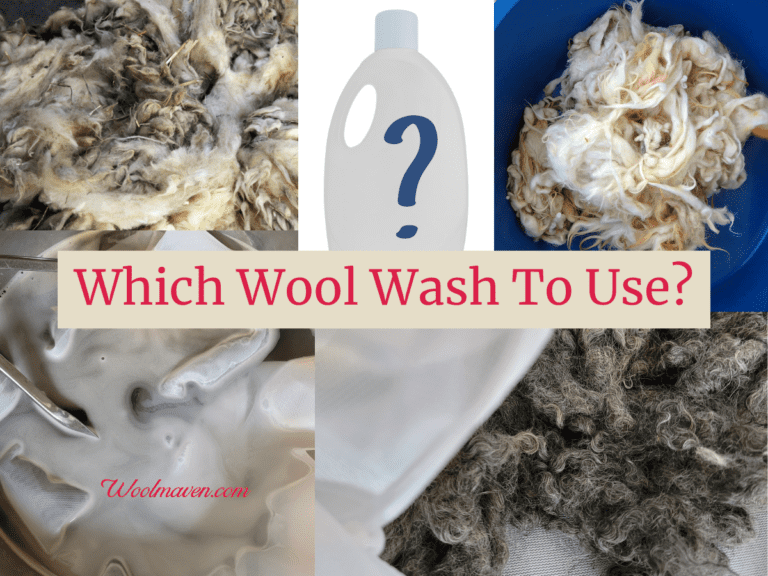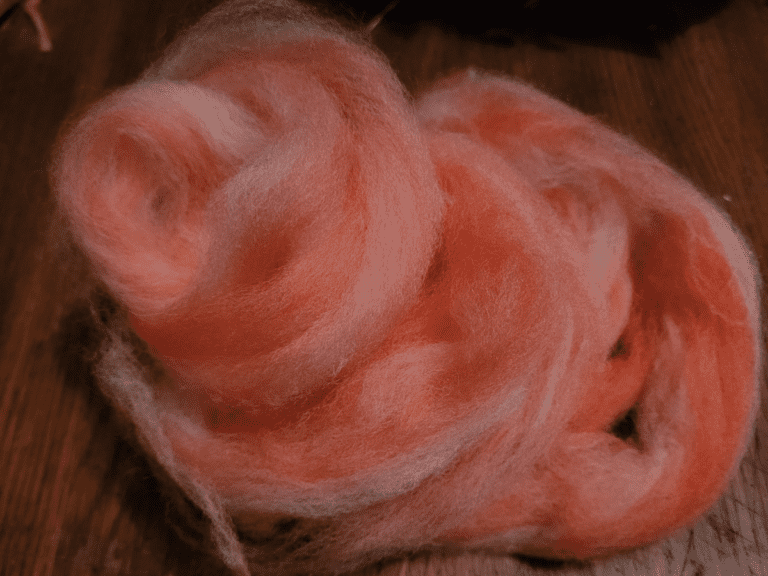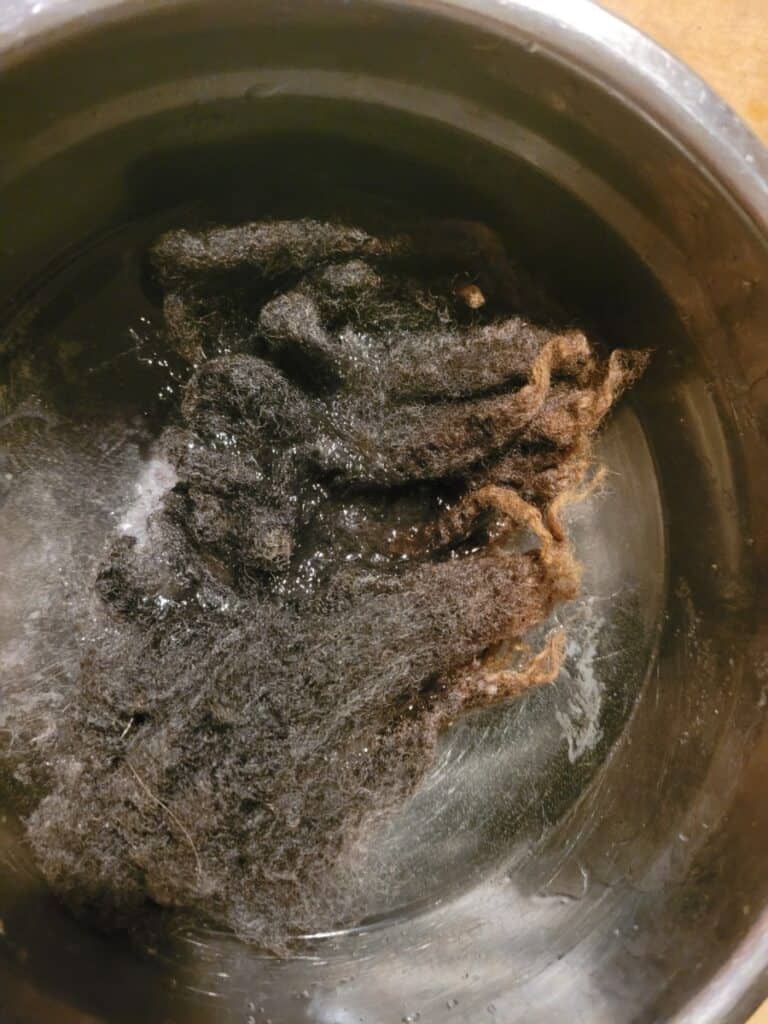Do You Dye Wool As Fleece Or Yarn?
You’ve decided that you want to have more control of the colors you work with when spinning wool. This way you can work with colors of your choice and dye more when you need it!
Now that you have an idea of what you want, how do you get it? Should you dye the wool fleece first, then spin it or spin it into yarn and then dye it?
Dyeing wool fleece or dyeing wool yarn both can result in consistent coloration throughout the fiber. Dye wool fleece to blend colors with combs or cards and to get smooth color transitions in the yarn. Dye wool as yarn to get patterned or abrupt color changes.
| Result wanted in yarn | Dye as fleece | Dye as yarn |
| smooth color transitions | yes | harder to achieve |
| same color for all yarn | yes | yes, if done in same dye batch |
| abrupt color changes | harder to achieve | yes |
| flat, even color | yes | yes |
| rich, complex color | yes, if blended | rich, but less complex |
| repeated pattern | harder to achieve | yes |
| variable pattern | yes | yes |
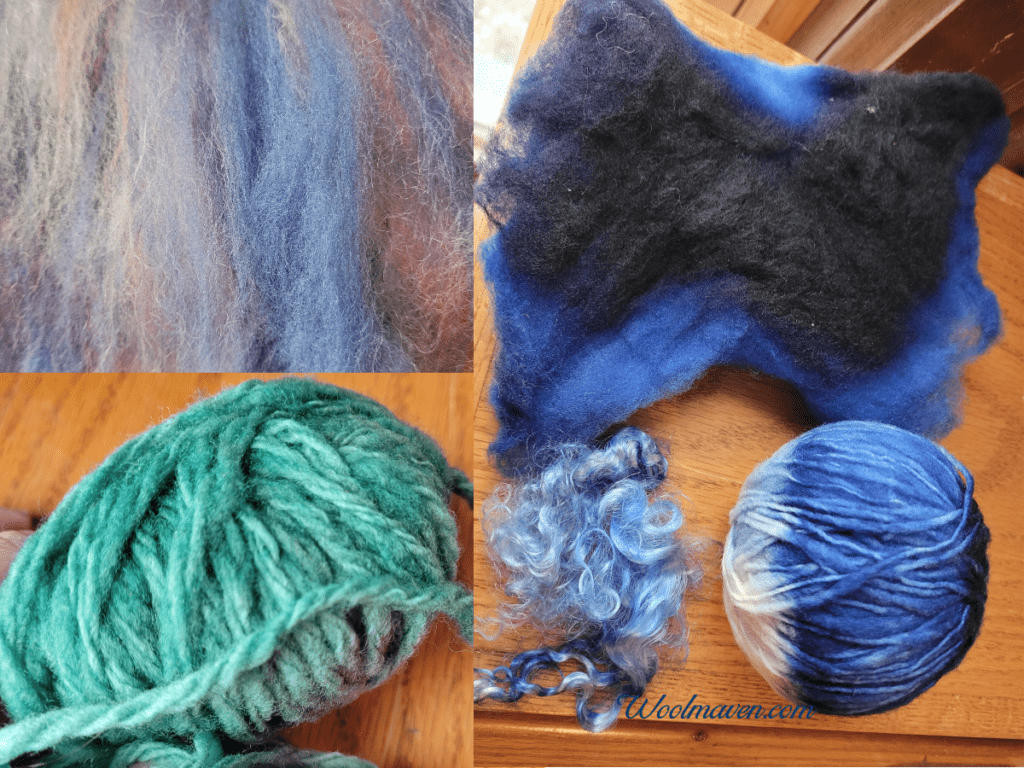
7 Places To Find Wool For Your Next Project gives you some ideas on where to source your fiber, depending on what you want, like best price or most options.
This post contains affiliate links, which means I receive commissions if you choose to purchase through links I provide (at no extra cost to you).
You can dye wool fleece or yarn
You can dye your spinning wool as fleece or as yarn, both will work just as easily!
A dye kit gives you a number of color choices and comes with instructions, it’s a simple and fun way to get started with dyeing protein fibers.
The only difference will be in the outcome that you can get as far as finished yarn or finished knitted, crocheted or woven item.
(I’ll use knitting from here out, since I tend to knit rather than crochet and the reasons to use dyed fleece or yarn are the similar no matter how the yarn is used.)
Mainly, if you want a more abrupt color changes in the yarn, you’ll probably want to dye the yarn.
If you want more smooth color changes or stripes of color that run the length of the yarn, you’ll need to be working with dyed fleece.
If you are looking for one color yarn, you can dye in either fleece or yarn form. I find that dyeing yarn gets you a more even coloration than when dyeing fleece.
Also take into account that the dyed wool may look a bit different that you expected when it is spun, since the fibers are arranged differently than when you looked at them in the washed and dyed fleece.
For example, if you like to work with a variegated yarn, one that gives you random spots of color as you knit, you’ll want to have or make a yarn that you dye after it is spun into yarn.
If, on the other hand, you want multiple colors that go in and out of your yarn as you knit, using dyed fleece to card for spinning will give you a more smooth and even color distribution through out the yarn.
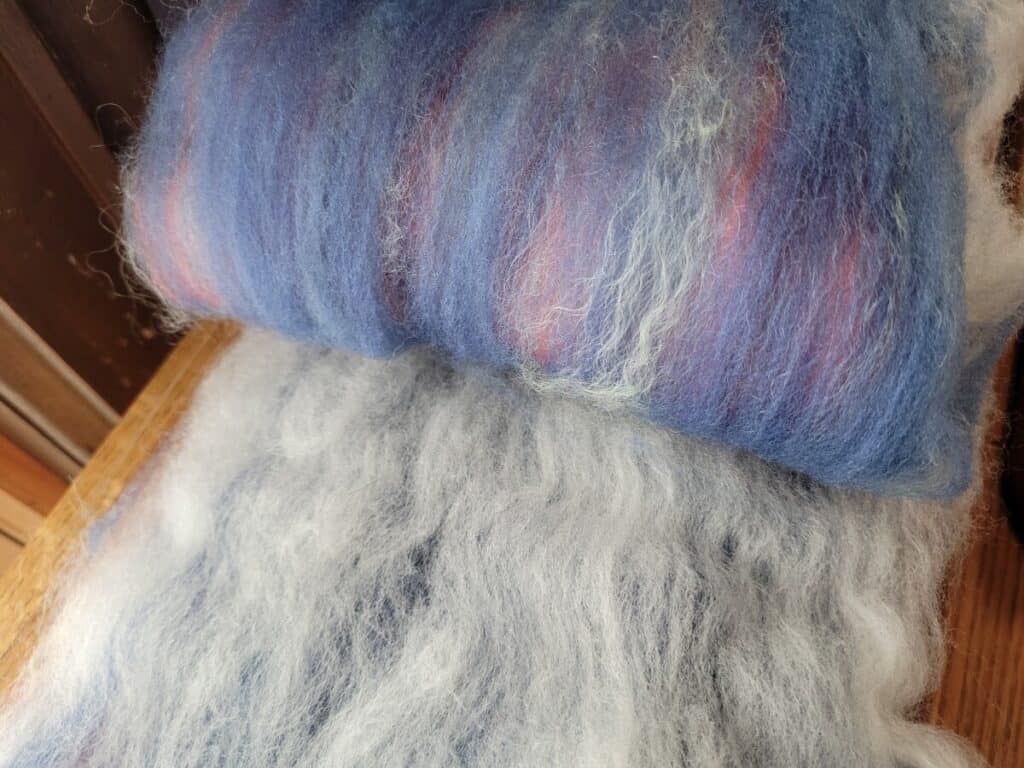
Reasons to dye as fleece
You can dye wool as fleece, then work with it from there. This is my favorite way to work with color!
I love to mess around with the colors and add a little bit of something special to the mix, like a bit of mohair for luster to make the color and yarn unique.
The highlights of dyeing wool as fleece are:
Even colored yarn Spinning from a dyed fleece will give you even color throughout the yarn that you make from the fleece, no worries about differences in dye batches.
Blending options If you want to change your base yarn, you can blend colors into the dyed wool, card or comb it, then have a different colored yarn even though you started with the same base of color.
I really love to mess around with color while carding, both hand and drum carding.
It is wonderful to take colored fleece and combine it into various batts and see what comes out in the spinning.
Of course, to make color combinations on the carder, you have to start with some colored fleece.
How To Make Roving Out Of Your Own Wool shows you a few ways to get that lovely dyed fleece ready to spin!
Reasons to not dye as fleece
There are a few reasons why you may not want to dye the fleece before spinning.
Here are the ones I can think of:
You are spinning in the grease
The only real reason that I can think of that you would not want to dye wool in fleece form is if you want to work with the fleece raw, meaning it still has grease in it.
The grease needs to be removed before dyeing, to ensure that the dye will set well in your wool.
You want very abrupt color changes in the yarn
Abrupt color changes can be easily done with dyeing, but will be much harder to make crisp and clean with dyed fleece.
You want a repeatable pattern to the yarn
You can make a repeatable pattern in your yarn with dyed fleece and spinning specific colors at specific intervals, but it will be easier to get the pattern while dyeing.
For instance, if you want a yarn that alternates between 1.5 feet of color and 1.5 feet of white, it would be easier to just put the skein of yarn half in and half out of the dye pot and get a very reliable half and half yarn.
You can make 1.5 foot intervals while spinning with sections of colored and sections of white fleece, but it will be a challenge.
Even if you keep your alternating on target, you’ll still have to be super precise with everything to get the same steady pattern you can easily get from dyeing.
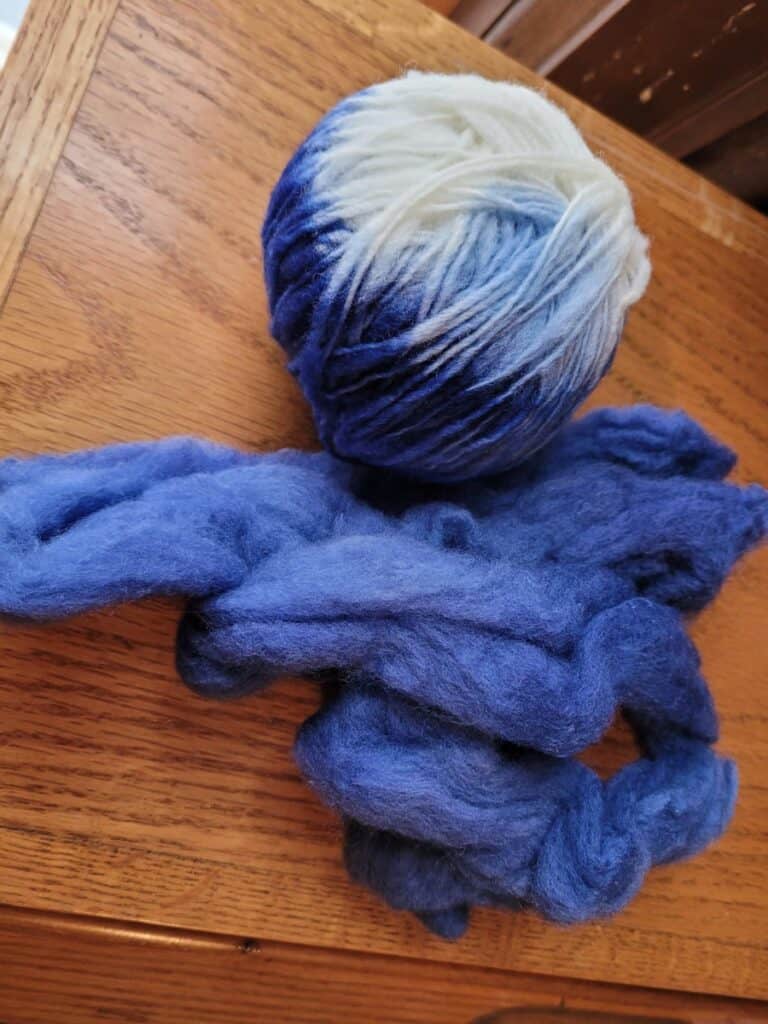
Reasons to dye as yarn
When you dye yarn, rather than fleece, you have the option to go the extremes, super even to crazy abrupt changes, all on skeins the same base yarn.
The highlights of dyeing yarn are:
Abrupt color changes When you dye wool in yarn form, you have the ability to make sudden color changes in the yarn.
If you love a finished garment that has a confetti color look to it, dyeing as yarn will make this possible for you.
Over dye or re dye Anther option with dyeing yarn is that you can make the yarn and decide to put an additional color over the top, to add to what you have already, or to adjust it because it did not turn out the way you wanted.
I hesitate to call these situations “mess ups”, since it’s really about preference, but if you feel you have a mess up yarn, try to change it with an over or re dye.
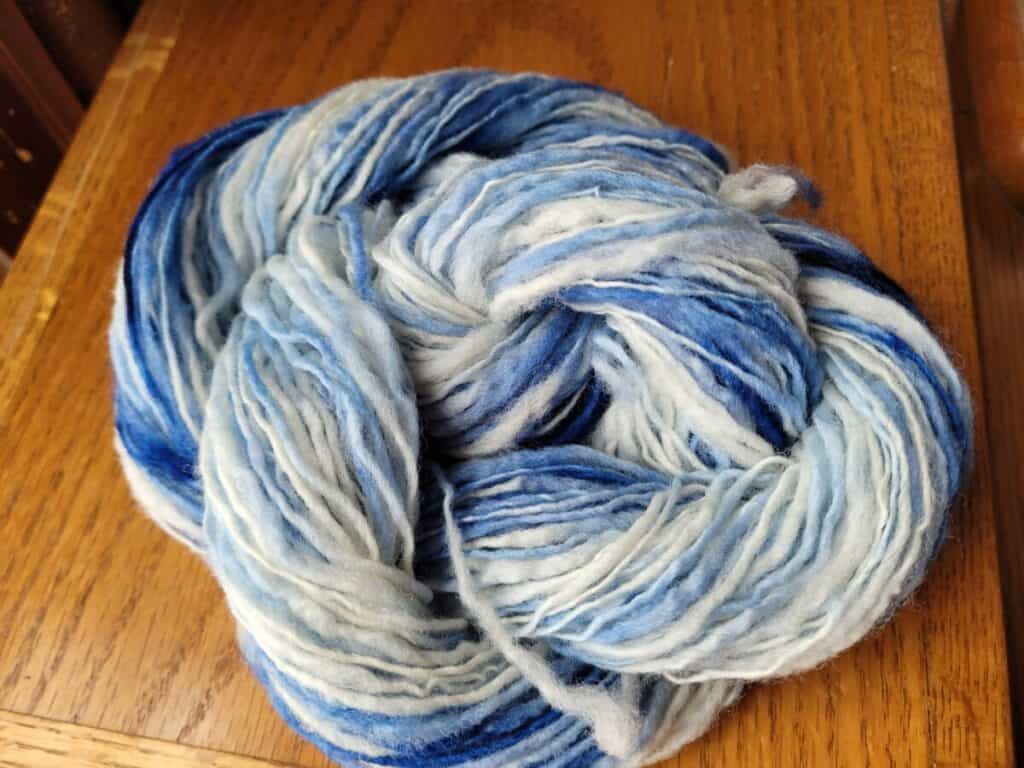
Reasons to not dye as yarn
There are also a few reasons to consider not dyeing as yarn and dye the fleece, instead.
You want a smooth color transition over the length of the yarn
If you want a smooth color transition over the running length of the yarn, really the only way to get that is to make a gradient batt and spin from there.
It would be tough to get the gradual color changes with dyeing that you can easily get with dyeing the wool then making a roving that has a gradual color change.
This would be super easy to do on a drum carder.
You would just make your batt with the color transitions you want and then diz it off of the batt in one long roving.
Or you can take the batt off the drum carder and section it off to spin according to the color changes. Don’t have a drum carder? Check out the Ashford Drum Carder at The Woolery, you’ll be glad you did!
Either way, you’ll get wonderfully smooth and even color changes in your yarn that you can not get with dyeing.
You want rich and lively color
This is a bit harder for me to explain, but it’s super easy to understand once you see it, so here goes.
When you want all of one color in your yarn, but you want that color to have richness and depth, not just saturation, how do you get it?
If you blend the target color together with two or more dyed fleeces you will have a more alive color than just dyeing to achieve a similar color.
For example, we all know that red and blue make purple, which of course you can dye or mix with fleece.
If you dye to get purple, each strand of wool will be the same in color, giving you a very consistent but potentially flat coloration.
If you dye red wool then dye blue wool and combine the two and maybe an additional color or two, you’ll still get purple, yet it will be an alive and rich.
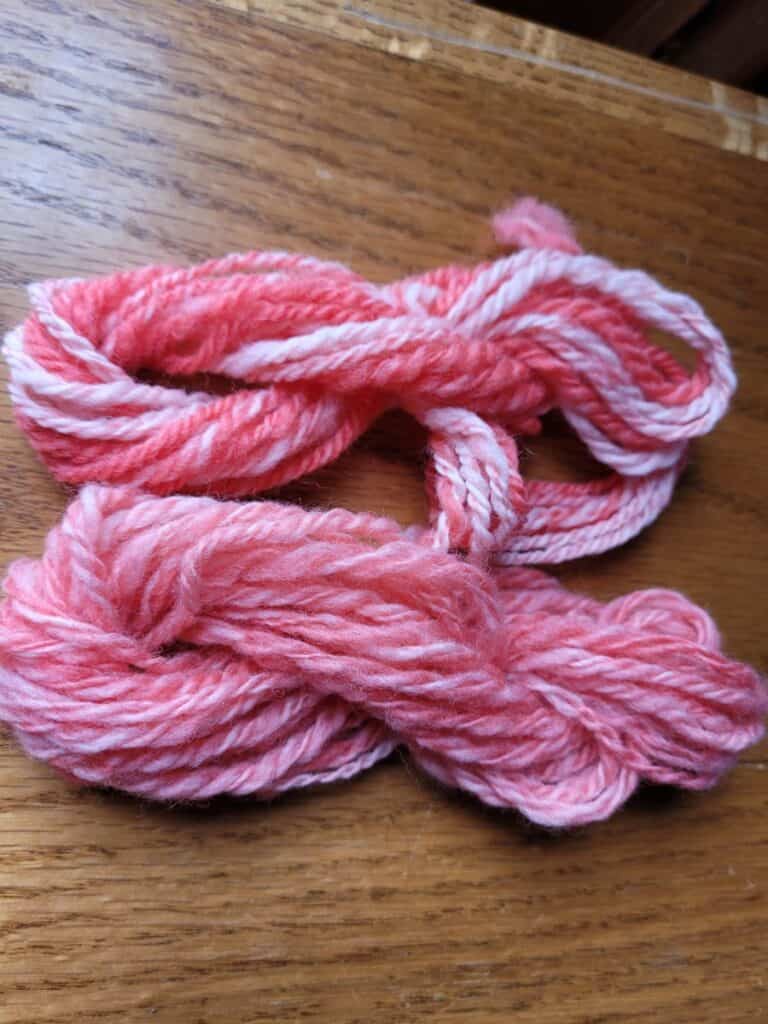
Of course, this is all person preference, and will change with what you are trying to do, but if you want rich alive color, not just saturation, consider working with dyed fleece and blending to achieve the color you want.
Silver Bobbin has a nice overview on How To Dye Wool, which goes over the basic steps and differences between the dyes you can use.

